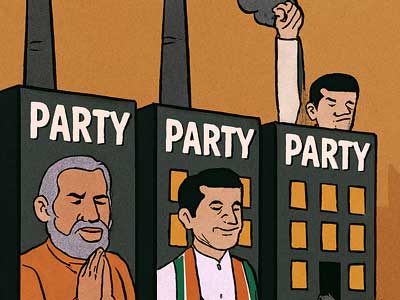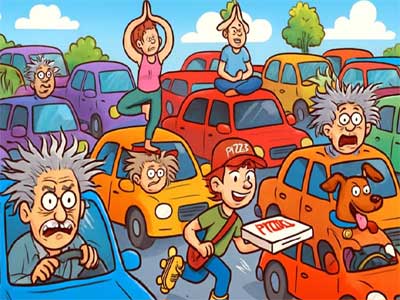The growing encroachment on Agra’s streets and sidewalks has thrown the city’s infrastructure into disarray. From Sadar Bazaar to Belanganj, Hospital Road, and Paliwal Park, street vendors and hawkers have taken over footpaths, forcing pedestrians to walk on busy roads, risking their safety.
With the number of vehicles in the city rising rapidly, the lack of parking spaces and basic amenities has only worsened the chaos. Residents and tourists alike are frustrated by traffic jams and unsafe streets.
Read in Hindi: पैदल चलने वालों व पर्यटन के लिए खतरा है सड़कों पर अतिक्रमण
Experts warn that unchecked encroachment and poor urban planning could severely impact Agra’s historical identity and tourism industry. The inaction of municipal authorities and police has left little hope for meaningful reform.
Will Agra be able to preserve its beauty and reputation as a tourist hub, or will this chaos push it further into decline? The streets are flooded with encroachments—vendors selling peanuts, coconuts, shoes, clothes, and more. Agra’s roads resemble makeshift showrooms, filled with hawkers selling food and household items.
The government’s lenient loan policies have contributed to the rise in street vendors. The litter left behind attracts stray animals, further complicating the already chaotic scene and tarnishing Agra’s urban landscape. This trend of occupying footpaths has made life difficult for pedestrians, who are forced to navigate narrow spaces or walk on busy roads, creating safety hazards.
Additionally, the spread of these temporary markets poses a significant challenge to established businesses that follow regulations and pay taxes. While large showrooms offer quality products and services, street markets often sell counterfeit or duplicate items at low prices, undermining the integrity of the local retail ecosystem.
Market expert Nand Kishore Bhagat advises, "This economic imbalance raises concerns about the long-term stability of formal retail sectors, the quality of goods and services available, and the overall aesthetics of small cities striving to preserve their cultural and historical identity. Local authorities must urgently focus on protecting public spaces and revitalising the city’s vibrant retail landscape."
Residents complain that the severe lack of parking spaces and poorly maintained sidewalks have plunged the city into daily chaos, jeopardising both the quality of life for locals and the experience of millions of tourists who visit this historic city each year.
With a population of over 1.6 million, Agra attracts more than seven million tourists annually. However, the city’s infrastructure struggles to meet its growing demands. Recent government data reveals that the number of vehicles in Agra has risen to match its population, a 30 per cent increase over the past decade. Alarmingly, the city has very few designated parking spaces, forcing most vehicles to park on the streets.
This disparity is evident on Agra’s congested roads. Social activists describe the scene as a ‘daily battlefield’, marked by frequent accidents and a growing sense of insecurity. The lack of parking spaces leads to conflicts among drivers over limited spots, exacerbating traffic jams and frustration.
The absence of pedestrian-friendly infrastructure has also left tourists disappointed. One tourist remarked, "Instead of enjoying Agra’s attractions, I spent more time navigating traffic and avoiding encroachments on sidewalks."
Uncontrolled encroachment is a major contributor to this chaos. Vendors and illegally parked vehicles have taken over sidewalks and streets, leaving pedestrians with no choice but to walk alongside vehicles. A 2023 study by an agency found that over 40 per cent of sidewalks in key areas are encroached upon, forcing pedestrians into dangerous traffic zones.
Experts caution that Agra’s infrastructural issues could damage its reputation as a world-class tourist destination. Traffic jams, delays, and overcrowding have turned tourism into an exhausting experience. Tourism contributes approximately ₹2,200 crore annually to the local economy.
Unless reforms are prioritised, Agra risks suffocating under its unchecked and unplanned development. The city, once a symbol of timeless beauty, now stands as a tale of neglect in the face of progress.


















Related Items
Urban Highways prioritised, Pedestrians and Cyclists ignored…!
How foul language became our national safety valve!
Agra’s famous Vaidya Gali wears a deserted look on Dhanwantari Jayanti